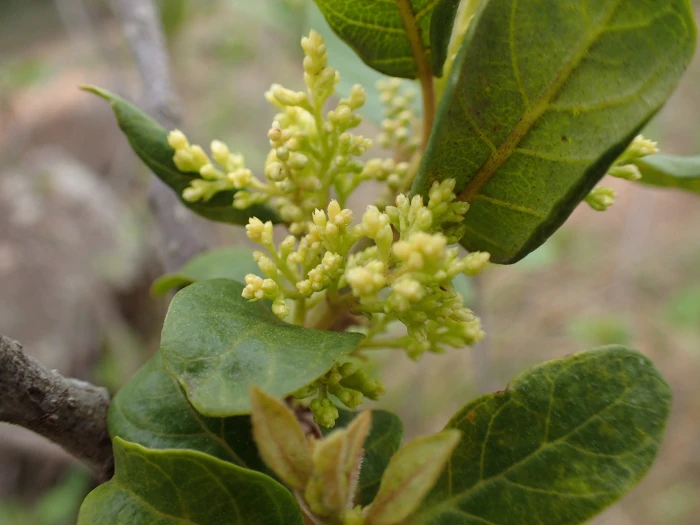False Assegai
(Maesa lanceolata)
False Assegai (Maesa lanceolata)
/
/

© Mahomed Desai
CC BY 4.0
Image By:
© Mahomed Desai
Recorded By:
Copyright:
CC BY 4.0
Copyright Notice:
Photo by: © Mahomed Desai | License Type: CC BY 4.0 | License URL: http://creativecommons.org/licenses/by/4.0/ | Uploader: m_d | Publisher: iNaturalist |

























Estimated Native Range
Climate Requirements
| • Precipitation | 45" - 54" |
| • High Temp. | 74°F - 87°F |
| • Low Temp. | 41°F - 59°F |
Summary
Maesa lanceolata, commonly known as False Assegai, is a semi-deciduous shrub or small tree native to a variety of habitats in the Afrotropics, including moist forest margins, stream verges, river banks, and the understory of coastal forests. It is also found in montane regions and on the edges of evergreen forests, extending from the southern Arabian Peninsula to the Eastern Cape in South Africa. Typically, it reaches a height of 3-15 meters with a similar spread, and it features a rounded canopy with slender, arching branches. The leaves are lance-shaped, glossy green, and can turn yellow before they drop. Small, white to cream flowers bloom in dense clusters, primarily during spring and summer, and are followed by spherical, red to black berries that are attractive to birds.
False Assegai is valued for its ability to quickly establish in disturbed areas, making it useful for reforestation projects and erosion control. It is also grown for its ornamental foliage and the subtle beauty of its flowers, which, while not overly showy, contribute to its aesthetic appeal. In cultivation, it prefers moist, well-drained soils and can tolerate a range of light conditions from full sun to partial shade. It is relatively low-maintenance once established, but may require additional watering during prolonged dry periods.CC BY-SA 4.0
False Assegai is valued for its ability to quickly establish in disturbed areas, making it useful for reforestation projects and erosion control. It is also grown for its ornamental foliage and the subtle beauty of its flowers, which, while not overly showy, contribute to its aesthetic appeal. In cultivation, it prefers moist, well-drained soils and can tolerate a range of light conditions from full sun to partial shade. It is relatively low-maintenance once established, but may require additional watering during prolonged dry periods.CC BY-SA 4.0
Plant Description
- Plant Type: Shrub, Tree
- Height: 3-12 feet
- Width: 4-6 feet
- Growth Rate: Moderate
- Flower Color: White
- Flowering Season: Summer
- Leaf Retention: Evergreen
Growth Requirements
- Sun: Full Sun, Part Shade
- Water: Medium
- Drainage: Medium, Fast
Common Uses
Bird Garden, Butterfly Garden, Low Maintenance
Natural Habitat
Moist forest margins, stream verges, river banks, the understory of coastal forests, and montane regions
Other Names
Common Names: Forest Asoka, Wild Asoka
Scientific Names: Maesa lanceolata, Baeobotrys ovata, Baeobotrys ovata, Maesa borjacana, Maesa borjeana, Maesa butaguensis, Maesa lanceolata var. djalonis, Maesa lanceolata var. lanceolata, Maesa rufovelutina
GBIF Accepted Name: Maesa lanceolata